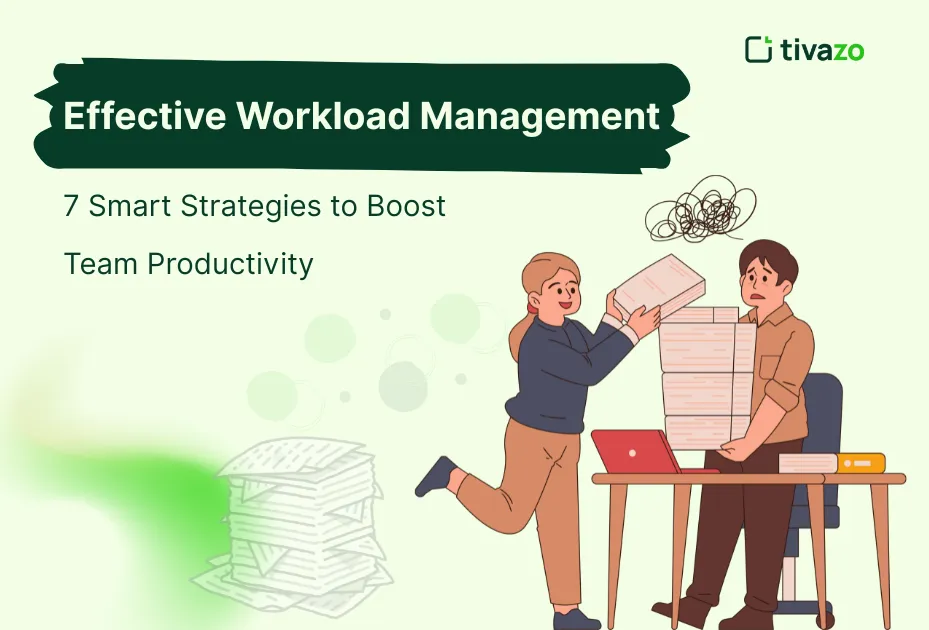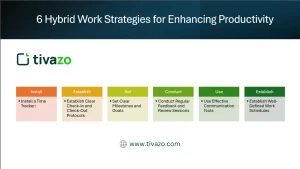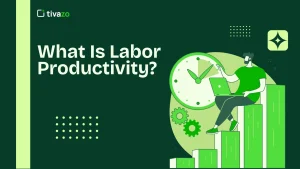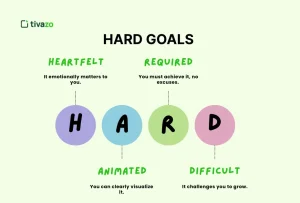Introduction: The importance of workload management today and in the future
Effective workload management is the process of planning, distributing, and balancing work to optimize team performance and avoid burnout. In other words, it is how smart teams get more done without having to work more hours or push people to the edge of their limits.
Today’s managers are facing a perfect storm: hybrid teams, ongoing remote fatigue, and sustained pressure to keep performance and employee well-being high. The post-pandemic era has made it even more challenging to keep workloads balanced and equitable while also keeping teams engaged and productive.
📊 The facts tell us this: Teams that effectively manage workload outperform other teams by almost 20%—this is from recent research done, and so why? Because we minimize burnout, maximize clarity, and empower people to focus on what actually counts.
Whether you are a team lead, founder of a startup, or a project manager, learning how to do effective workload management will have a profound impact on team performance, not to mention your own peace of mind.
💡 Wondering how you can make it work for your team? Continue reading for some practical approaches, expert tools, and an AI tasks planner to make your team’s success simple
Common Workload Management Pitfalls (And Why Teams Fail)

Despite everyone’s best intentions, many teams do not use effective workload management, and they ultimately fail and miss their goals because their problems often continue unnoticed until the damage is done, i.e., employees quit.
Here are the most common obstacles to team productivity:
1. Missed Deadlines
When planning and prioritizing workloads, missed deadlines are an outcome of workloads not being correctly planned. Teams may rush at the last minute to make the deadline, severely compromising not only quality but employee satisfaction as well.
2. Employee Burnout
When you overload one or more employees and do not balance workloads, the result is stress, fatigue, and ultimately burnout. This is especially true in hybrid and remote work environments following the pandemic, where people have uncertainty around work-life balance.
3. Unbalanced Task Distribution
When a workload management strategy is not apparent, some employees are overloaded with work while other employees are woefully underutilized. Eventually, this leads to a lack of motivation and a refusal to work with the offending employees.
4. No Visibility and Accountability
It is possible that a manager will never know who is doing what, and that the manager is not aware of where the project is at any given time. This lack of visibility may, as a consequence, result in missed updates, duplicate work, different people unaware of ownership, etc.
5. Poor Communication and Collaboration
If team members from the same team do not talk regularly about their workloads, changes in workload, or any reason for the workload change, they might not know enough about what is going on, they might cross-create things to do, or worse, tasks drop off the radar altogether.
Poor communication at this stage creates a level of work coordination that is close to impossible and a broken continuum.
6. Insufficient Tools and Processes
It is often confusing and unreliable to manage a team’s workload using legacy manual systems like spreadsheets. Without any form of automation, or even effective workload management software, you like always, they will never be able to address the changing priorities, let alone the first team capacity!
7. Reluctance to Change
In many cases, teams are either unwilling (or outright refuse) to adopt new methods or equipment for effective workload management because they think it will create another level of disruption or more work for them. As a result, these threats tend to lessen improvements and simply promote status quo inefficiencies.
8. Managing Hybrid and Remote Teams
Hybrid and remote teams add another layer of complexity to effective workload management. Without in-person contact with team members, it is harder to evaluate their capacity and well-being, along with creating a greater chance of ignoring or missing workload misalignment.
📉 What are the consequences? Poor productivity, greater stress, and a team that always seems to play catch-up.
But the good news – they are all preventable with the right strategies, tools, and mindset.
Step-by-Step: 7 Proven Workload Management Strategies

Successful workload management involves more than just distributing workload; effective workload management is about producing work with maximum productivity, keeping your team members from burning out, and having inputs and outputs aligned with the business’s objectives. Below are 7 typical and actionable strategies to help you manage your team, either in-person, online, or hybrid.
1. How Do You Honestly See Team Capacity?
Successfully managing workloads starts with understanding what can realistically be managed and effective workload management. Without sight of your team’s bandwidth in the present, it is all too easy to overload tasks or leave significant deliverables uncovered.
Visual tools help to make workloads transparent, including:
- Gantt Charts – Provides understanding of timelines, dependencies, and deadlines
- Kanban Boards – Gives managers a day-to-day view of tasks dispersed across teams that are in progress
- Workload Calendars—Offers a daily view of an individual’s availability and workloads
Some tools, such as Tivazo, have even streamlined capacity planning by automatically calculating availability based on assigned hours, allowing you to allocate work without overlapping the person’s workload.
📌 Why it matters: More explicitly, the visibility allows you to plan better, build trust with your team, and provide managers the opportunity to manage hidden overload before things become unmanageable and lead to burnout.
2. How can you manage your tasks well?
When managing a project, there are lots of tasks competing for your attention, so how you prioritize those tasks is fundamental to managing your workload efficiently. Poor prioritization can mean missing deadlines on high-impact tasks and spending too long on low-impact tasks.
🧠 Use these tried and tested frameworks:
- Eisenhower Matrix – Organize your tasks according to urgency and importance so you know what is critical..
- ABCDE Method – The ABCDE method ranks your tasks from A for most important to E for least important, and focuses your energy accordingly.
3. How to automate task allocation?
It is not helpful to allocate tasks based on an initial gut feel and out-of-date Excel spreadsheets. It is an inefficient and risky practice to manually allocate tasks in modern teams, where an individual needs to proactively match their tasks to the best available team member.
⚙️ How AI-based task allocation supports you:
- Allocate tasks by skill level, workload, and due date
- Automatically adapts to changes in team member availability or project requirements
- Frees your time to think strategically
4. How Often Should You Review Workloads?
In many teams, the top 10% are taking on most of the work. While this may seem productive in the short term, it often results in disengagement, resentment, and turnover.
🔁 Recommended review touchpoints:
| Frequency | Ideal For |
|---|---|
| Daily | Stand-ups, capacity snapshots |
| Weekly | Sprint planning, realignment |
| Bi-weekly | Workload trend monitoring |
| Monthly | Strategic forecasting, performance review |
Visualize it! For example, Tivazo’s workload trends chart provides a quick view of which employees are over or under capacity.
📌 Why it matters: Regular continuous reviews will help managers to be proactive, not reactive, ensuring distributed workload distribution over time..
5. How do you counteract high and low performers?
In many teams, the top 10% of performers carry a disproportionate amount of the workload. While this might seem efficient short term, it often leads to disengagement, resentment, and turnover.
📊 What to do:
- Utilize tracking to identify trends
- Rotate key responsibilities to develop each Team member
- Assign mentors and cross-train low-performing associates
⚠️ Watch for suffering high performers—they may not complain, but they do not help long-term sustainability.
📌 Why it matters: Balanced distribution encourages growth, retains talent, and ultimately enables productivity for the long term by distributing the workload fairly.
6. How to Prevent Burnout Before it Happens?
Burnout is one of the greatest threats to productivity today. Remote or hybrid work environments create the ideal condition for prolonged overwork to go unnoticed or ignored. One component of good workload planning is to identify and react to burnout early.
👀 Watch for signs like:
- Late, late work
- Fatigue, irritability, or disconnectedness
- Lower quality of output.
Do monthly productivity audits, schedule mental health check-ins, and allow people to log vacation days when they need them.
7. What tools are there to manage workload at scale?
Manual methods won’t work when there are multiple teams and scaling projects. The right tools can help facilitate effective workload management (providing iterations of information from a centralized dashboard, who is working on what, progress, completion, and real-time updates) and provide usability through smart automations.
Here’s a quick comparison:
| Tool | Best For | Limitations |
|---|---|---|
| Trello | Lightweight, visual task boards | Lacks capacity tracking |
| Tivazo | Smart auto-assign, team health metrics | Newer to market but powerful |
| Asana | Workflow automation, subtasks | Can become complex over time |
| ClickUp | All-in-one work management | Steep learning curve |
| Monday | Team visibility, integrations | Can get pricey at scale |
What's the best tool for managing remote workloads?
Real-World Example:
How a small team was able to increase their productivity by 40%, using smart and effective workload management
Case studies serve as evidence that effective workload management is not a concept used when workers get overloaded; it creates real, measurable change. Follow along as we highlight how a marketing team of five at a SaaS startup, that is growing rapidly, reinvented productivity, increasing outcomes by 40%, by using smart workload strategies.
📉 Before: Unorganized tasks, missed deadlines, and an exhausted team
This small but highly aspirational marketing team initially floundered without really implementing a structured workload process. They were using separate tools, such as spreadsheets and Slack, but they weren’t using those tools effectively to manage their workload.
Key issues:
- The team identified that there were three core issues:
- Repeatedly missing campaign deadlines
- 60% of all tasks were delayed or unfinished
- Task distribution was uneven— at the top, the top performers had lost control of their workload while two other members were burning out
“We kept putting out fires. Nothing was clear, there was no flow of work, and there was no strategy.”
– Alex R., Marketing Manager
🚀 After: Visibility, Balance, and a 40% Increase in Productivity
Everything changed when they adopted the evidence-based Tivazo workload management platform to manage workloads. They were able to apply smart scheduling, capacity planning, and set up review meetings, which were essential in ensuring moving forward and not burning people out.
Some key things improved results:
- Reviewing tasks weekly with Tivazo’s workload calendar
- Assigning tasks automatically with capacity and skill level
- Using the ABCDE method of prioritizing things
- Better alignment of high performers and low performers
📈 Results after 8 weeks:
- 40% increase in productivity from the team
- 96% on-time delivery
- No one burned out
- Morale and teamwork greatly improved
“Tivazo gave us clarity. It’s finally real that we have a workable workload management system for our team,”
— Alex R., Marketing Manager
🔍 Important Takeaways for Teams
- Effective workload management brings visibility, equitable distribution of tasks, and prevents burnout
- Smaller teams can be leveraged and have increased output when applying smart processes and the implementation of the appropriate tools
- Regular reviews and automated workflows lead to accountability and efficiency.
Free Tools & Templates for Managing Workloads
Having the right tool set up can make it easier to manage workloads effectively. Below are three valuable tools that you can start using today (without registering).
1. Task Tracker Template
This customizable Excel task tracker can help you stay on track with projects. Capturing tasks, owners, due dates, and status.
2. Weekly Planner
Use this printable weekly planner template to plan your week out. This template will help you organize your tasks, appointments, and priorities so you can plan your workload accordingly.
- Download: Canva’s Weekly Planner Templates
3. Workload Heatmap Template
Use this heatmap template to visualize your team’s workload. It is a downloadable resource in Google Sheets, Excel, PowerPoint, and PDF format so you can analyze overallocated resources.
- Download: HubSpot’s Free Heat Map Template
Conclusion: Lead Smarter, Work Better

Effective workload management is built around seven core strategies: visualizing capacity, task prioritization, automating assignments, regularly reviewing workloads, workload management within a team, preventing burnout, and leveraging tools. This consistent application of each of these steps supports the manager’s ability to manage smarter and ultimately saves time and reduces stress and overload for the manager and team.
To truly scale and sustain effective workload management, the manager will need to apply productive tools. For example, Tivazo provides managers with new management competencies by way of its enviable features, including automation of task assignment and real-time visualization of capacity, thus enabling the manager to work with a balance, focus, and a high-performing team within the complex and fast-paced hybrid workplace of today.
Try Tivazo for Free:
🎯 Want to help your team exploit their full potential?
Exploit actual workload management, and then go to Tivazo.
- Looped team collaboration – no crooks in communication
- Dashboards to track productivity while you are on the move,
- Ability to adapt in the moment
- Call it before Burnout ever occurs
🚀 Start a free trial-Hassle-free- No credit card
FAQ:
What is the best way to manage workloads in remote teams?
The best practice to manage virtual team workload is by deploying collaboration project management software for task assignments, prioritizations, and frequent check-ins automation. Visualization like Gantt charts and workload heatmaps keep teams in balance and aligned.
How can workload management reduce employee turnover?
Successful workload management prevents burnout, improves morale, and provides transparency. Employees do more work and will be less likely to quit if they feel that they can manage their workload.
What KPIs should I track for team workload?
Track important performance indicators such as activity completion rate, allocation workload balancing, utilization of capacity, staff satisfaction, and overtime. The KPI also identifies constraints and improves productivity.
How do I avoid overloading top performers?
Equalize workload by tracking people's capacity and using tools that track performance metrics. Cycle your high-leverage activities, foster the development of your team skills, and limit availability.
What are the signs of poor workload management?
Some of the common symptoms are chronic late delivery, burnout among staff, breakdown in communication, high turnover of staff, and imbalance in task distribution. Treatment of them promptly enhances team performance.




